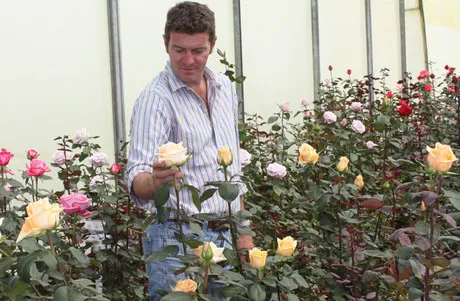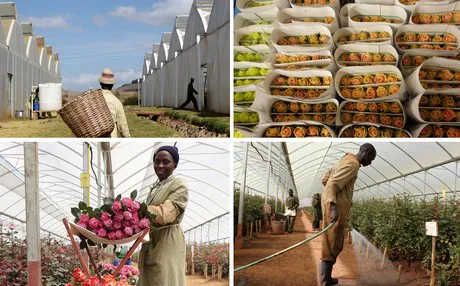
Ivan Freeman, owner of Uhuru Flowers Ltd.
Growers that increase their production for Valentine's Day, need to program the production cycle carefully. All flowers are being cut off at a certain time in order to harvest the return flush all at once. However, according to Freeman, doing this is risky; “when the weather conditions are not as expected or something else goes wrong, you may miss Valentine’s Day and you will have a large number of red roses that cannot be sold”. Moreover, a cycle of a particular variety takes 70 days, for example. So if you cut back the crop for Valentine’s Day, you will have to deal with a flush of red roses 70 days after Valentine’s Day."
Ivan prefers to produce steady volumes all year round. They do, however, produce 10 to 15% more for Valentine’s Day. “We look at the our red rose varieties and we take the cycle time of each one (the time from cutting one stem until the next is produced). One cycle before Valentines, we cut out damaged stems and open up new cut points, so we end up with an additional red rose production” says Freeman. For Uhuru Flowers, the challenge is to manage the expectations of their customers. "We have to inform our customers what we are able to supply in order to let them search for additional sources to meet the demand. We need to make sure that what we say we will supply we actually do supply.” The prospects are looking good. This year, the weather is very good for the rose cultivation; clear sky, warm, dry, windy and sunny days and quite cold nights. "This ensures we are able to supply the expected volumes."

Uhuru Flowers rose farm. The farm is at an altitude of 2600m above sea level, making it one of the highest rose farms in Kenya.
Uhuru Flowers produces 46 varieties in 17 hectares of greenhouses. 25% of their greenhouse consists of 5 red rose varieties. In general, they export to 63 countries, during Valentine’s Day the demand is mainly from Europe, Asia and Australia. After Valentine’s Day another important day approaches, namely Women’s Day on 8th March. This day is huge in Russia, which is one of Uhuru Flowers' main markets throughout the year.
For more information
Uhuru Flowers Ltd
Ivan Freeman
Email: ivan@uhuruflowers.co.ke
www.uhuruflowers.com
